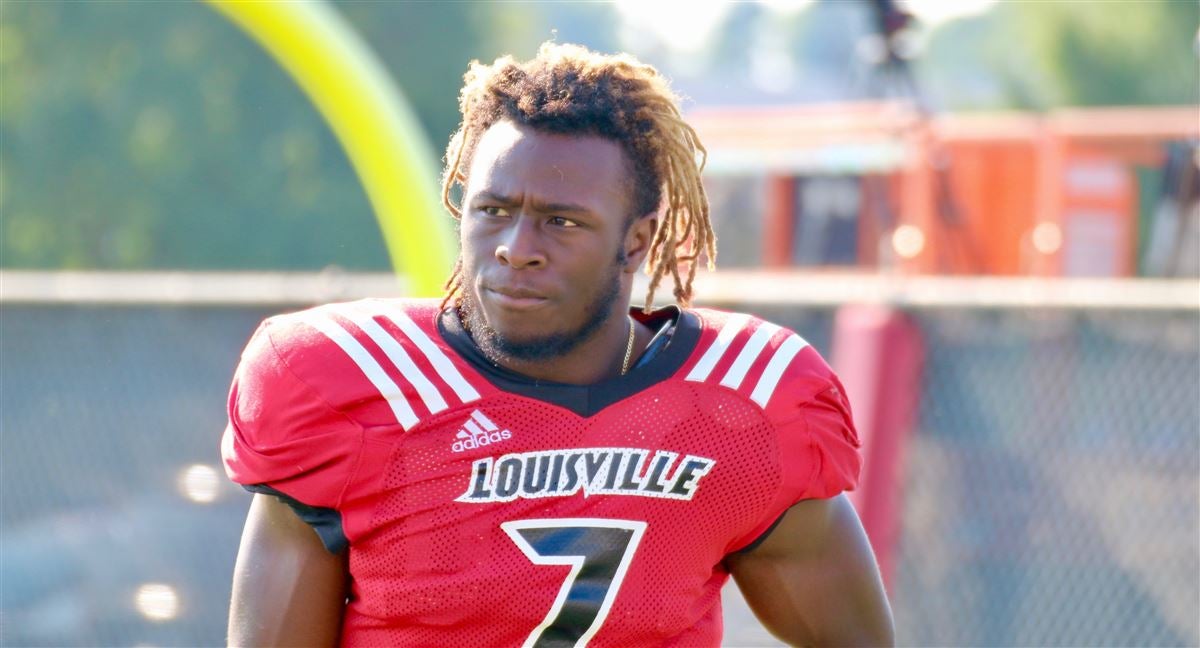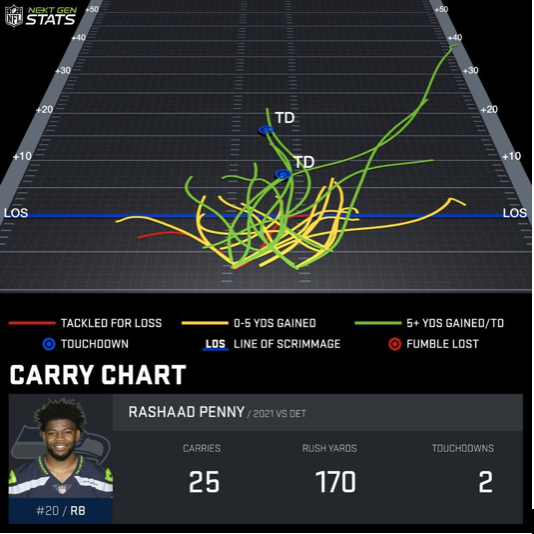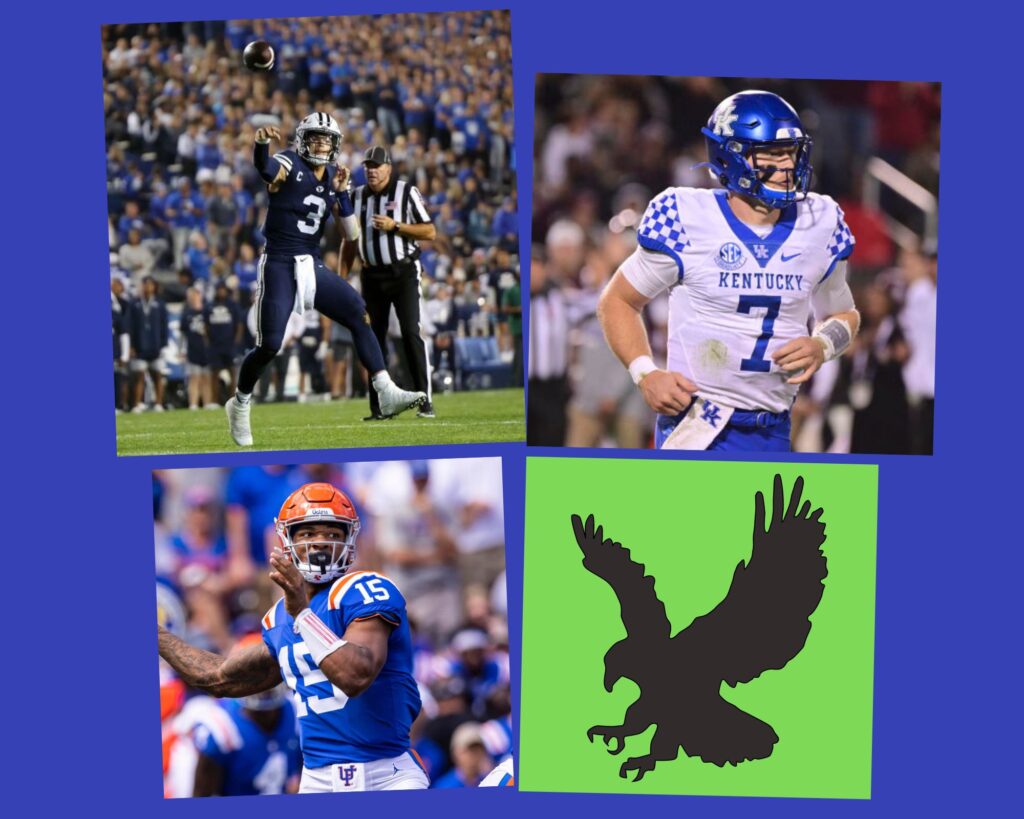Go on draft websites or peruse ‘draft twitter’ and you see a rarely challenged consensus.
The top two quarterbacks are C.J. Stroud and Bryce Young. Barely anyone tries to offer a different take.
Slowly but surely, however, the tide is starting to change.
For starters, Mel Kiper listed Will Levis as his second ranked quarterback, behind Stroud. Now, there’s this report from Levis-sceptic Tony Pauline:
If you talk with scouts, it seems that Will Levis of Kentucky is the signal-caller they are most enamored with. He’s a Josh Allen type in the sense he’s big, athletic, and has a major league arm but will need proper coaching and development.
One league insider told me Bryce Young and CJ Stroud are rated higher on Draft Twitter than they are in the scouting community. Young’s size and lack of arm strength are a concern, and Stroud’s inconsistency in the short passing game has raised some red flags.
What has felt obvious for some time is finally developing into a new consensus.
Levis isn’t the perfect prospect and I’ve never tried to argue he is. I watched all of his 2021 games during the summer and I’ve watched (and written up) all of his 2022 games so far.
Clearly there are still some moments where his footwork becomes slightly lazy and it’s led to a couple of avoidable turnovers. There was a moment against Ole Miss last week where he saw a 1v1 in the red zone he liked, rushed the snap and a potential game-winning touchdown was taken off the board because one of his receivers didn’t have time to get set.
Yet Pauline’s report makes total sense.
I’m going to try not to keep repeating myself because it’ll become very dull and it’s only October 7th. We have months of debate ahead of us. However, this warrants a quick review.
Teams can easily turn on the Kentucky tape and see transferable pointers. They can see a player who is succeeding on a team that isn’t loaded with 5-star recruits. Levis plays behind a suspect offensive line and has been sacked 18 times in five games.
He’s facing adversity.
He played for Liam Coen last season, the current LA Rams offensive coordinator. This year he’s running Kyle Shanahan’s offense because Rich Scangarello replaced Coen. Within this scheme he takes snaps under center, he makes the reads and adjustments at the line, there is evidence of going through three progressions and he is functioning like a pro.
Then there are the traits. Levis is a burly 6-3 and 232lbs. He is an outstanding athlete. At SPARQ he jumped a 36 inch vertical, ran a 4.10 short shuttle and delivered a whopping total score of 123.27. He has a big arm and his throwing base — when he avoids the occasional lapse — is sound and secure with both feet on the turf, his shoulders square to the target and he can do all the fancy modern throws off-platform and on the run.
Plus, he has tremendous character and no red flags.
Everything here is factual and will be very appealing to NFL teams. Decision makers, when asked by their owner why they want to select Levis, can answer very easily.
He doesn’t have to have a flawless final season at Kentucky either. The basis for a high draft pick is not a Joe Burrow Heisman campaign, when he had the luxury of throwing to Ja’Marr Chase and Justin Jefferson at LSU.
Levis is getting it done and simply put, Stroud and Young cannot match any of the above.
That’s not to say they are bad players. They’re not bad players.
But look at Stroud. Here’s a player who gets to play behind a star-studded O-line, throwing to multiple first round receivers, with five-star running backs in the backfield. Before every snap, the coaches on the sideline make his reads for him and instruct him what to do.
That’s why you see interceptions like this:
Avery Young picks off CJ Stroud 👀
CFB Live Blog: https://t.co/LXPH5piOFM
— Pro Football Network (@PFN365) October 1, 2022
You need to get off that target because nothing about the coverage says ‘throw the ball here’. When you’re essentially being told what to do pre-snap, however, this can happen.
Stroud doesn’t play in a pro-style offense. Ohio State has churned out a collection of very productive athletes at quarterback over the years and there’s a consistent trend that this environment is not transferable to NFL success. You don’t face any adversity and in the pro’s you have to make your reads, make the calls, lead the team and do it all behind a weaker offensive line with playmakers who aren’t going to win every 1v1.
Then there’s Bryce Young — a naturally talented passer and the Heisman winner from last season.
Yet he too benefits from the ‘Bama effect’. Aside from the games against Georgia — which are a fair contest — every other game he plays in, he’s playing an overmatched opponent. The line and skill players. The physicality and guidance. It’s all so far ahead of everyone else. It doesn’t make for an easy projection to the next level.
Then you have to account for his size. It’s long been confirmed, including by Todd McShay recently, that he’s a shade above 5-10 and around 185lbs. How do you project that to the next level? There isn’t anyone to compare to.
Let’s say he gets drafted by someone in the top-10 — presumably without a great supporting cast (or at least with a developing offense). Can he take the punishment that will come with playing on a bad team?
Only last week he suffered a shoulder injury. And look, injuries happen to big, physical quarterbacks too. But this question is going to linger with Young. You can’t blame teams for taking this into account when putting together the order on their draft board. They’d be negligent not to.
For all the good Young shows on tape (and there is a lot of good) there are also moments that seem all too familiar having watched a shorter quarterback playing in Seattle for some time. He bails on the pocket more often than people are noting. He had a horrendous interception on a needless scramble-and-heave a couple of weeks ago and the shoulder injury supposedly happened on a needless escape last week.
I’ve seen, every week, Levis stand in the pocket with pressure coming right at him. He’s stood tall, delivered a throw and taken a hit in the pocket. Some of his best throws have come in these situations this year.
That’s NFL football. That’s what teams want.
This is why when we get to April, we’re going to see a handful of teams fighting and clawing for Levis. It’s why he might end up going first overall. It’s why I think he’ll be QB1 on a lot of boards.
If the team picking first overall somehow doesn’t need a quarterback (which seems incredibly unlikely given the way the Jets and Jaguars are improving), there’ll be a scramble to move up and select him.
The Seahawks have the stock to make a move but whether it’s possible or not, we’ll see. I’m sure many people reading this — or speaking on Twitter — will determine it’s not worth it given the offensive performance so far. I would also remind people that Seattle’s offense feasted on a Lions defense as embarrassing as theirs. Before the Detroit game, the offense had produced three points in six second-half quarters. They were shut-out by the 49ers.
I’m not sure the Big-12 game last week was indicative of a team that no longer requires a long term answer at quarterback.
Let’s also not forget — Geno Smith isn’t even contracted to Seattle next year. Even this season, when he was presented with his only opportunity to start in the league, he delayed putting pen to paper because (presumably) he wasn’t totally satisfied with the terms. That signing took longer than most people expected.
NFL free agency starts in mid-March. Despite seemingly receiving very little interest elsewhere, these are the dates he officially signed with the team since initially joining in 2019:
2019 — May 15th
2020 — May 20th
2021 — April 22nd
2022 — April 22nd
So on two occasions he didn’t sign until two months after the league year started and on two occasions it was a month after. There may be other reasons for that (prioritising other positions ahead of backup QB) but it’s worth noting that even this year, it took until April 22nd to get a deal done.
As such, it might not be the easiest negotiation in the world if he continues to perform. It’s just something to remember. The ideal situation for this team remains having a talented young quarterback on a cheap contract with club-control for five years. We’ve seen how much that has benefited teams over the years.
Admittedly the Seahawks also have to get better on defense. Again, without wishing to repeat things I’ve already gone over a fair bit, the blue-chip defenders are simply not emerging within this draft class.
I would go as far to say that this might be the worst looking top-10 I’ve covered since starting the blog in 2008. You basically have Will Anderson who warrants a very high pick. The quarterbacks always get elevated. I’m not sure I’ve seen another player who warrants going that early.
I genuinely believe this is shaping up to be a draft where one very high pick (top-three) will be better than two firsts in the middle of round one. I don’t see a way to ‘fix’ this defense picking twice in an easily projectable 8-16 range.
I can’t see a single offensive lineman worthy of the top-10. The other defensive linemen are more 16-32 range types. There are no receivers playing well enough currently to warrant a top-10 pick. The top two cornerbacks for me (D.J. Turner & Kelee Ringo) aren’t being tested enough to pass judgement.
In 2020 you had Chase Young, Jeff Okudah, Andrew Thomas, Derrick Brown and Isaiah Simmons who were all big name college players who went, unsurprisingly, in the top-10. Then you had a handful of highly rated O-liners and some high-profile receivers follow shortly after. It enabled a Justin Herbert to trickle down to #6 overall. I suspect the same would happen in 2023 with C.J. Stroud if those types were in the draft next year. They aren’t, which increases the likelihood a QB-needy team will take him once Levis and Anderson are gone. Perhaps even before Anderson.
With every win the Seahawks move further away from the top picks but also, it’s hard to see how they pivot to improving the defense. Which is why, right now, I’d probably make the case for trading up.
The only plausible scenario I can imagine where you don’t — or feel comfortable not doing so — is if Anthony Richardson declares. I’ve watched all of his games for Florida and I’m well aware of his inconsistencies and mistakes. I also see a player with the physical potential to be special. To do what Josh Allen did — be an error-strewn rough diamond in college, need a couple of years in the pro’s then emerge as a superstar.
Richardson has that potential.
Allen was the seventh pick in 2018, with Buffalo trading up from #12 to get him. If Richardson declares — the Seahawks could pull a similar move. Then you have a player you can work with to be your future without perhaps needing to use multiple first round picks to get into the top two or three.
If you enjoy the content on Seahawks Draft Blog, why not consider supporting the site via Patreon? (click here)





